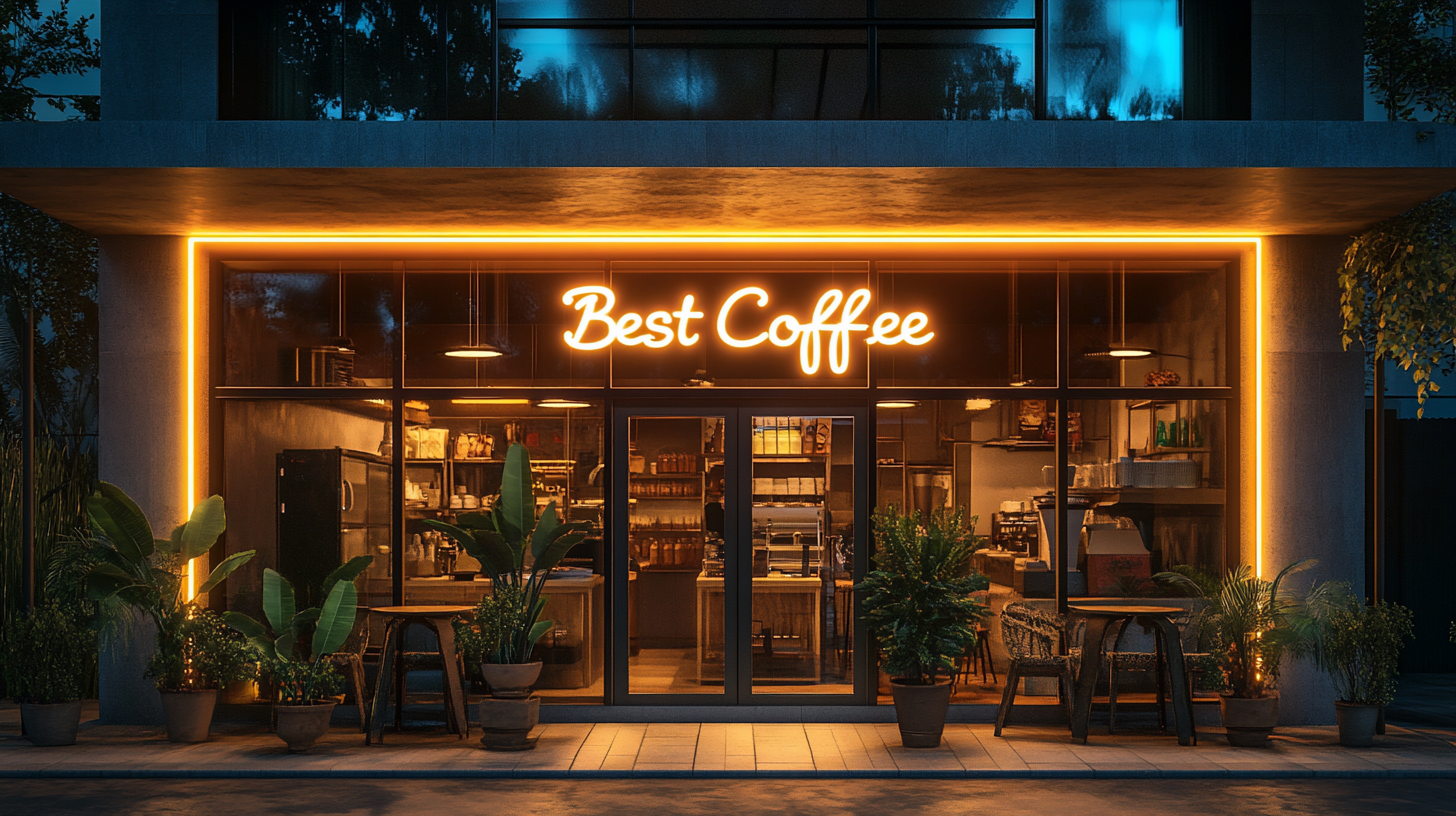The 3 Best Virtual Restaurants & How They Work
Digital-first, convenience-packed dining options have been on the rise since the unprecedented times of years past.
Online meal delivery has grown by ~150% since 2021.
The number of popular QSR app users has reached the billions.
AI partnerships and automations are becoming increasingly common.
And now, virtual restaurants are joining the mix, a decade-old digital concept that’s been making a major comeback over the past few years.
In this blog, we’ll take you through everything you need to know about virtual restaurants, from the good they can do for you and your restaurant to gold-star examples you’ll want to check out.
Don’t worry — we’ll start by answering the simplest question first:
What is a virtual restaurant?
What a Virtual Restaurant Is (And Is Not)
A virtual restaurant is an online, delivery-only business that operates out of an existing restaurant's brick-and-mortar location.
Virtual restaurants are a sort of “restaurant-within-a-restaurant” situation; two restaurant brands exist independently, but share the same kitchen, staff, equipment, ingredients, and resources.
The virtual restaurant would also accept orders exclusively online through third-party delivery apps or the restaurant’s own web platform or mobile app.
Here’s a (very simple) example of what that looks like “in action:”
- Restaurant A has a physical location selling burgers and fries.
- The owner wants to sell fried chicken but doesn’t want another building to manage. So, she opens an online, delivery-only chicken business called Restaurant B.
- Since the owner already has Restaurant A — an existing building with a full kitchen and staff — she decides that Restaurant B’s food can be prepared here, too.
- Now, the owner can serve in-house diners at Restaurant A’s physical location and online diners through Restaurant B’s delivery services, all under Restaurant A’s roof.
Now… let’s clear up what a virtual restaurant is not.
A virtual restaurant is not a ghost kitchen.

A ghost kitchen — sometimes called a commissary kitchen — is a rentable commercial kitchen space. Any brand can rent out a ghost kitchen, whether they’re online and delivery-only or they have a physical location but need more space for an event or expansion.
Like virtual restaurants, ghost kitchens also accept orders online through third-party delivery apps or the restaurant’s own web platform or mobile app.
Our Online Ordering Guide makes choosing which systems and platforms suits you best.
The Benefits and Challenges of Virtual Restaurants
From deciding on a delivery platform to testing out dynamic pricing, you’ll find pros and cons with every new restaurant innovation… and virtual restaurants are no exception.
Here are a few major benefits and challenges of opening a virtual restaurant to help you decide whether they’re an innovation worth exploring (or ignoring).
Benefits
- Virtual restaurants have fewer/lower upfront costs.
Opening a virtual restaurant has fewer upfront costs than a traditional one. Take rent, for example. The average restaurant’s rent sits at $6,914/month, meaning a second physical location would add at least that amount to your monthly bills. But, with a virtual restaurant, you capitalize on the rent you’re already paying, while also saving yourself double payments on staff, ingredients, appliances, and other high-value costs.
- Virtual restaurants can increase your audience (and sales).
Virtual restaurants can bolster sales from your brick-and-mortar restaurant by adding a second, highly diverse revenue stream to your business. There are a lot ways a virtual restaurant can expand your audience and revenue, from brand-new dayparts to new audience segments. And, according to Uber, those efforts can really pay off — restaurants have seen sales increase by 45% after adding a virtual restaurant!
- Virtual restaurants empower your brand to get innovative.
When asked how QSRs can increase sales, Sujeet Naik from Coresight Research suggested “[introducing] new menu items” regularly. But in reality, menu innovation can be hard for brick-and-mortar restaurants with an established, well-liked identity. This is where virtual restaurants get extra exciting because they allow you to get creative and think outside the box. As long as your kitchen staff can make the items, then the world (or the menu) is your oyster.
Challenges
- Virtual restaurants mean splitting attention/efforts in two.
When you open a second, virtual restaurant, your costs might not double… but your efforts will need to. As the owner, you’ll need to find a sustainable way to divide your focus between both restaurants, ensuring quality stays top-notch at both restaurants. Remember that your staff has to perform the same juggling act too, finding a way to balance different dishes, delivery vs. dine-in, and unique audience needs… all while maintaining quality and quantity.
- Virtual restaurants can increase staff workload and training.
While virtual restaurants don’t require as many new staff as traditional restaurants, they will require a shift in staff demand. You’ll need to train your staff on a whole new range of tasks, from navigating online orders/delivery and prepping new menu items to prioritizing in-house vs. online orders and handling customer service. And, if online demand exceeds your current staffing capabilities, you may have to hire more people regardless.
- Virtual restaurants require mastering the delivery model.
Considering 43% of restaurant professionals already offer delivery services, getting used to a new delivery model won’t be a huge learning curve. But, if you’re part of the 57% that don’t offer delivery (or if your delivery system is super outdated), then you’ll have to figure out how to master delivery before you move on to virtual restaurants… something that takes time, effort, and funds.
You can't go virtual without an online ordering platform. Our guide has everything you need to know.
The 3 Best Virtual Restaurants
At this point, you know the pros and cons of virtual restaurants… on paper. But what does a successful virtual restaurant look like in “real life?” Here are three examples of virtual restaurants done right (to keep in your back pocket as inspiration).
#1 — Chili’s: It’s Just Wings
In June 2020, Chili’s parent company Brinker International revealed a new virtual chicken restaurant: It’s Just Wings.
While Chili’s is loved for its Big Mouth Burgers® and Baby Back Ribs, It’s Just Wings pares down its massive menu to… well… just wings. But, this hyper-focused menu meant that the virtual wing restaurant took virtually nothing to get going.
“[W]e had to buy a couple of small refrigerators in a couple of restaurants, but for the sales volume that it generates, it’s really capital-free,” said Wyman Roberts, Brinker’s Chief Executive.
“We get to leverage the equipment we already have. And things like our combi, which is a great piece of equipment that allows us to smoke our ribs, now also allows us to smoke wings and offer a differentiated product from a lot of people in the category.”
#2 & 3 — Denny’s: The Burger Den & The Melt Down
In January 2021, Denny’s announced they’d launch two new virtual restaurants later that year.
The chain’s first virtual restaurant — The Burger Den — was designed exclusively for the restaurant “to focus on its burgers and test new varieties,” said Denny’s CEO John Miller. The second virtual restaurant — The Meltdown — is all about the sandwiches, with Miller saying the focus is “handcrafted sandwiches with fresh ingredients.”
The nice thing about both of these virtual restaurants is that the menu life was virtually non-existent. No new ingredients were required for any of The Burger Den’s menu items, and “artisan bread” was the only new addition for The Meltdown.
And, according to Sharon Lykins, Denny’s VP of Product Innovation, the simplicity of the integration comes down to one, simple concept: stay in your lane.
“We’re going to stay into things that we know we can deliver well,” said Lykins. “[It] just so happens that those things are what people are looking for in delivery.”
Starting a Virtual Restaurant? Craver Can Help.
Whether you’re inspired by the niche of It’s Just Wings or the experimentation possibilities of The Burger Den, both virtual restaurants have one thing in common:
Top-shelf online ordering capabilities.
The “delivery-only” aspect of virtual restaurants means that a strong mobile app and intuitive web ordering platform become must-haves… and that gives you a unique opportunity.
Instead of juggling in-person and online ordering options, virtual restaurants allow you to focus on creating the absolute best delivery experience your customers have ever seen.
And Craver can help.
With a custom-branded Craver app or web ordering platform, your customers can enjoy sleek, easy-to-use interfaces while you take advantage of our exclusive benefits. Working with Craver for online ordering and delivery means:
- Commission-free deliveries using the DoorDash, UberEats, and Relay delivery network
- Loyalty and rewards programs that incentivize your regulars to come back again (and bring their friends)
- A 20% increase in average order value with automated and personalized upsells, recommendations, add-ons, and modifiers
The success of your virtual restaurant is only as good as your online ordering system. Make sure yours is the best of the best with Craver.

.png?width=86&name=Untitled%20design%20(84).png)







